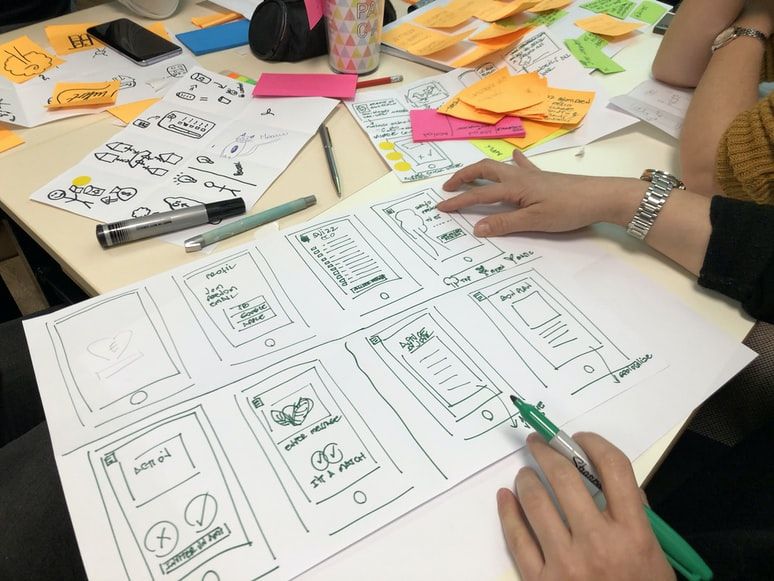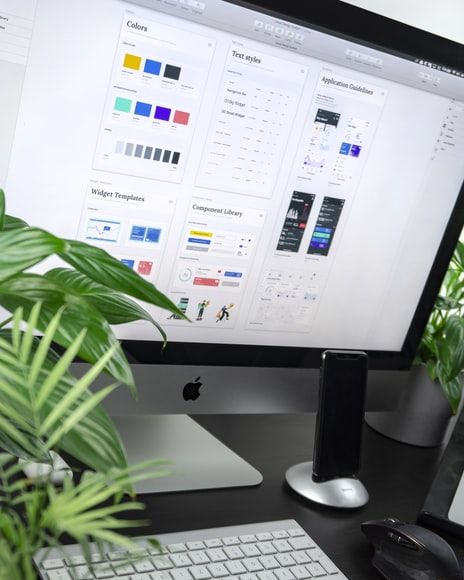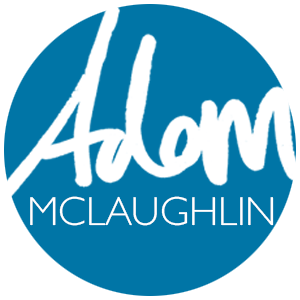How much should a website cost? This is probably the question that most freelance web designers want to ask. Whether you actually say it out loud or not, it’s almost definitely on your mind: What should I charge for website design and maintenance costs, and what do other web designers charge?
The biggest fear for a web designer: If I charge too much, I won’t sell any websites. If I charge too little, I won’t make enough to keep my website design business.
 Like nearly everything else, there are a lot of variables that go into determining a price.
Like nearly everything else, there are a lot of variables that go into determining a price.
Like asking ‘How much does it cost to buy and maintain a car?’ there are a lot of other factors that need to go into the process, and the answer isn’t simply a flat rate for any given freelance web designer.
We’re going to go through various factors and what to consider when setting your price for each.
Here are some of the many factors to consider when pricing a website design:
- How many pages will your website have?
- Are there blog posts that need to be updated with proper SEO titles, alt tags, and meta descriptions?
- Will there be any special functionality like a ‘members-only’ area?
- Are there any integrations that have to take place with a 3rd party software (like a book online, or reservation request), and is that software already providing that integrated function, or does it need to be built?
- Is the client providing the copy (text content) for the site, or does that need to be written?
- Do you have photos, or will there be a cost to licensing stock photos?
- Will the client need e-commerce or an online catalog of some sort?
Similar to web design pricing, there are many factors that go into a website maintenance package:
- How often will the client request content updates?
- How much hosting management and backup space will the client need and how frequent are the necessary backups?
- Is the client using any plugins or themes that require frequent updates (like a shipping calculator plugin)?
- Will the client correspond by email, or do they need regular zoom meetings?
- How will you report on your progress each month to the client?
- Will they need 1 hour of your time per month, or are they needing something like 30 hours of your time per month?
- What kinds of results is the client hoping to see?
- Are there any other services you’re offering to accompany the website maintenance, like writing an email newsletter, creating blog posts, google ads, or updating their catalog when a supplier has a new product?
Before getting into the nuts and bolts of pricing, have a revenue goal in mind
 Here’s a general rule of thumb: Figure out what you’d like to make in a year. For round numbers, let’s say that’s $100,000 (not a suggestion, just an example). Divide that number by 2000. (In this example, that’s $50.) In-house web designers would need to make $50/hour for 2000 hours per year (40 hours per week x 50 weeks) to have an income of $100,000.
Here’s a general rule of thumb: Figure out what you’d like to make in a year. For round numbers, let’s say that’s $100,000 (not a suggestion, just an example). Divide that number by 2000. (In this example, that’s $50.) In-house web designers would need to make $50/hour for 2000 hours per year (40 hours per week x 50 weeks) to have an income of $100,000.
Since you’re a freelancer, you’re not simply punching the clock and making an hourly wage for 40 hours a week. You have to factor in networking events, finding new clients, accounting, tracking expenses, personal development (like online courses or mentorship), researching, finding and learning new tools, following up with clients who haven’t paid their invoice, tech support, responding to emails, sick days, and vacation time somewhere in there.
You’ll also have expenses like software, equipment, hiring contractors or developers if there’s work you don’t know how to do, or can’t keep up with.
Take your hourly wage goal and double it
To account for those extra business expenses and time away from billable hours, double your hourly rates goal. You’re now at $100/hour as your hourly rate (in our example).
From there, take your best guess at how many hours are required for the client’s project, and if you’ll have any purchase expenses (stock photos, plugin, theme, pay a copywriter, etc) to arrive at your quote.
Just for a ridiculous amount of clarity, this means that if the project will take you 40 hours and you have to buy $200 worth of stock photos, you’ll charge 40 hours x $100 = $4000 + $200 stock photos = $4200.
It seems simple, but figuring out how many hours that project is going to take is part of the complexity.
There is a difference between a freelance web designer who is starting and an experienced web designer who has a portfolio to show
 If you’re just starting out, it’s okay to charge a bit less based on your hourly rate. Your prospective clients don’t necessarily see that you have as much experience, but they’re willing to give you a shot if you’re offering the same work for less than the more-established web designers charge.
If you’re just starting out, it’s okay to charge a bit less based on your hourly rate. Your prospective clients don’t necessarily see that you have as much experience, but they’re willing to give you a shot if you’re offering the same work for less than the more-established web designers charge.
Through that whole process, be sure to recognize that you’re underpriced and this is a temporary strategy to build your portfolio.
Underpricing can also easily backfire.
I lost a project early in my freelance website designer career because, even though the client liked my ideas and said they thought we would work together better than the other web designers that quoted their project, they didn’t think I would be able to execute the whole project as my pricing was significantly less than what they thought was required.
If you’re an experienced designer and you’re wanting to see how your rates compare to the current market, then here are some different ways to approach pricing as a web designer:
Web Design Pricing Option 1: Build An Audience and Templates For A Specific Industry
 By being the “go-to” web designer in a specific industry, you can create 3 packages tailored to that industry so your pricing is fixed. Before you go into a client call, you already know what the packaging and pricing options will look like.
By being the “go-to” web designer in a specific industry, you can create 3 packages tailored to that industry so your pricing is fixed. Before you go into a client call, you already know what the packaging and pricing options will look like.
There’s no need to negotiate, or haggle, and as you build your portfolio, you’ll start to be recognized in the industry as the go-to person for that industry.
Depending on the complexity of your industry, you may have add-on options (ie. Add on a blog for $x/month or add on e-commerce for $x upfront) but for the most part, your pricing is menu-based, not customized.
In this case, you can ask for the sale in the initial call because you’ll listen to the client’s needs, offer the 3 website building package options and propose the one that seems to be the best fit for them. In a custom-design situation, you’ll want to walk away from the conversation before providing a quote so you can be sure that you’ve included all of the factors necessary for the project rather than picking a number out of thin air.
The ‘Big Mac’ of Website Design
Templates are the ‘franchise model’ of web design, and one that I’m a big fan of, since you know it takes exactly X number of hours to complete this project and has $X additional costs, so you’ve priced it at $X. It’s like going to McDonald’s and ordering a Big Mac. They don’t need to provide you with a custom quote, because they’ve already determined what needs to be charged to deliver that product as promised. No pickles? Ok weirdo. That won’t change the price, but it’s a small adjustment to make your order feel customized.
You can already end your first call with your client by saying “It seems like the best package for you is Package B that is $2199 upfront and $199/month with the option to add in a blog after we’ve published your website. We have an opening in our schedule this week. Can I send over the deposit invoice this afternoon?”
This also gives you the option to expand into bringing on a salesperson if/when the time is right since that person won’t have to understand 100% of the ins and outs of web design and how long services will take before offering a quote.
Web Design Pricing Option 2: Custom Quotes
 In our web design agency, we do both option 1 and option 2. We mostly do work that is based on our own WordPress templates. We’ve built an engine that gets people into the system, builds out their website quickly, and gets them live so we can build recurring revenue from their monthly service agreements.
In our web design agency, we do both option 1 and option 2. We mostly do work that is based on our own WordPress templates. We’ve built an engine that gets people into the system, builds out their website quickly, and gets them live so we can build recurring revenue from their monthly service agreements.
Now and then, we take the opportunity to build custom websites. If variety is the spice of life, I’m a jalapeno, so I like to work on a custom website project now and then to bring some variety to our template engine.
I’ve found that most clients who are ready to pay for a custom business website are looking for a specific kind of result. They’re not choosing a templated website, or a DIY website builder (like Wix or Squarespace). These clients want something that is built specifically for them and their goals.
I start all custom clients by asking them to fill out a “Request A Quote” form on our website. It’s 10-12 fields (maybe more or less depending on your clientele) and does 2 things for us:
1) It gives me an idea of the project before we jump on our first call with the client. I want to know:
- If they currently have a website so I can see what they’re currently working with, why they’re looking for a better website (and how they define ‘better’)
- The action they would like a website visit to like like “Get people to walk into our location” vs. “Book a consultation with us.”
- General marketing questions like “What makes your business unique from your competitors?” or “Who is your typical client?”
If a client can’t answer those questions, it’s going to be difficult to develop a scope that’s actually going to create results for them more the simply “build a website.”
2) The “Request A Quote” form weeds out tire kickers. If someone can’t take 2 or 3 minutes out of their day to answer a few drop-down questions and one-line text boxes, I’m happy not to work with them.
From there, I have a follow-up call with the client where I talk with them about the onboarding form. I ask them to rephrase what they’ve already told me like:
- What makes you unique in your industry?
- Who is the typical client you’re serving?
- How do new clients usually say they’ve found you?
- What are your goals for your new website?
- What action would you like your website visitor to take?
Onboarding Question: How many people do you have on your client email list and how often do you email them?
I try and help new clients understand that redesigning their website is part of their business growth process, but it isn’t the goal. The goal will be to bring them new business. I always try and open the door to a conversation about growing their email list and maximizing its use.
I use this example: If you had the choice between a new website that looks great but doesn’t increase business and a new website that looks identical but brings in more business, which would you choose?
 100% of the time people want to bring in more business.
100% of the time people want to bring in more business.
I let them know that the good news is we can do both with them, but bringing in new business looks like generating new leads, and a great way to do that is trading something for an email address and creating a follow-up sequence for potential clients.
Social media is good because you can take an active role in reaching people who aren’t thinking about you a the moment when your post shows up in their newsfeed, but the reach is 5% on a good day. A website is good because you have complete control of the content and 100% of the attention of the people that are there, but it’s passive because people only find you when they’re looking for you.
Email is a perfect blend with a typical open rate being 20-30% AND you can actively get in someone’s inbox who wasn’t thinking of you at the moment.
Once clients understand the value of email, I open the door to a question about email subscription popup. Most of the time, the response is “Oh, I hate those things” and yet, if we go through their inbox, we’ll see newsletters, coupons, and emails from companies they’ve subscribed to themselves.
I always respond with:
“Yes, 98% of people hate email popups, but statistically, 2% of visitors will complete an email opt-in if the offer is valuable to them.
How many visitors did you have on your website last month?”
Let’s say they had 2000 visitors to their website last month. Hopefully, they have google analytics installed so you have that exact number. This means that they could have grown their email list by 40 people last month, which works out to around 500/year growth to their email marketing list.
Then I ask if they had 500 new leads per year that they were nurturing with an email list, would that be helpful to their business? If that then turned into a 2% opt-in rate, they could have sold to 10 new clients (500 x 2%) last year that simply visited their website and disappeared.
Here’s where we get to price on a custom quote. Ask your client: How much is the average client worth to your business?
These numbers will obviously vary, but if you have a personal injury lawyer, 10 new clients could be in the millions of dollars range. For a dentist or golf course, 10 new clients could be in the $10K-$20K range. For a restaurant, 10 new clients isn’t a significant number (but they would see a higher conversion rate for a $50 meal than a golf course website would for a $2500 country club membership).
Now you have an idea of VALUE. You’re talking to the client about the VALUE their website with a proper email opt-in strategy and email follow-up funnel could make for their business.
Now when you let the client know you’re going to dig in a little bit further and send a quote this afternoon, you’ll be able to say, “This strategy could generate your business $50K in the next 12 months based on your current numbers. We’re going to do what we can to try and increase those numbers, and the good news is that your website won’t be the full $50K budget, so you’ll likely see a positive return in this first year.”
Wait for the client’s response. They’ll often say something like “That’s good. My budget isn’t in the $50K range. It’s more like the $20K range.” or “Sounds good. If I can see profit from this new website in the first year, I’ll be happy.”
When you follow up later with a quote, you can reiterate the numbers provided and use something to the effect of “I can create a website strategy that’s going to create $50K worth of value for your business this year, and the investment is only $35K, and once you have that website, it will continue to be your 24-hour salesperson for many many years, even after your initial investment.”
Now you’re not talking about trading money for your hours (where the client needs to evaluate if you’re worth the time you’re saying it will take), you’re helping the client see their money as an investment into growing their business.
Should I quote my web design as a project or by the hours
 When you’re sending your quote to your client, don’t give hourly rates, just quote your web design services project. I can’t stress this enough. A flat rate or flat fee is best for you and your client, whether you’re building a personal website, a mommy blog, a basic website, or adding more pages to a client’s existing website.
When you’re sending your quote to your client, don’t give hourly rates, just quote your web design services project. I can’t stress this enough. A flat rate or flat fee is best for you and your client, whether you’re building a personal website, a mommy blog, a basic website, or adding more pages to a client’s existing website.
A client doesn’t want to pay for your time, they want to pay for your expertise. The last thing you want is a client ‘looking over your shoulder’ asking “Is it done yet?” because they’re concerned the final tally will be more than they want to pay OR WORSE, accusing you of ringing up extra hours for extra profit. This is not the way to start a business relationship.
I also don’t break down pieces of the project for pricing, only for the timeline:
The home page will take this many days, then subpages will take this many, then we’ll focus on the backend SEO and membership login, review everything for mobile, and finally build your email opt-in sequence.
The project investment is $XXXXX with a 50% deposit to get started and $XXX/month for maintenance once the site is published.
Breaking down the project into pieces by pricing turns into a menu mentality of ‘I’ll take this, but I don’t want that.’ Sorry Mr. client, but we can’t build out your email opt-in and expect to see any beneficial results if you’ve opted out of the follow-up email sequence, SEO, and mobile formatting for purposes of budget.
Should I quote website designs as “Good, Better, Best” options?
A lot of agencies, web designers, and mentors will say yes. I don’t personally love the approach because offering a single solution shows the client that you know what their needs are and you’re offering the necessary solution in their web design and website cost.
If I go to the mechanic and he tells me I need a discombobmatron and it’s $750 to stop my engine from puffing out smoke when I turn left, I don’t ask what my options are. “Hey, can we use like a $150 tire instead?” would quickly show how little I understand about cars. He also doesn’t say “Well, we’ve got a good, better, best option. I could fill up your washer fluid. I could fill your washer fluid and replace your headlights, or I could simply install my discombobmatron.
 Sales psychology will tell you that when you give someone 1 option, it is easy for them to say no, but if you give them 3 options, it makes it easier for them to rule out 1 and then leaves them with 2 to choose from. It’s not a dead-end in the quote process if they decline the first option.
Sales psychology will tell you that when you give someone 1 option, it is easy for them to say no, but if you give them 3 options, it makes it easier for them to rule out 1 and then leaves them with 2 to choose from. It’s not a dead-end in the quote process if they decline the first option.
Also, statistically, people will the majority of the time choose the middle option. They’ll say they don’t want to choose the most expensive luxury option, but they also don’t want to cheap out, so they land with the middle quote.
Here’s my logic: They’ve said no to other web designers, other proposals, and they’re choosing me. I want to set the stage for expertise in the client conversation before I prepare the quote that leads them directly to choose my expertise, not choose between the 3 options I give them. I want them to know that I’ve created a custom solution specifically for their needs that we discussed and make them think that choosing something else isn’t going to get them the results we talked about.
I think it’s possible that my approach may cost me web design projects. It’s possible they see my 1 option and THEN decided to explore another web designer just so they know what options are available. I’m sure that’s happened, but the clients that come to me and CHOOSE me are some of the best to work with because they are ready to invest what’s necessary to get the results we talked about, and they see me as an expert.
Pricing Ongoing Website Maintenance Costs
You and I both know that websites aren’t without website hosting, domain registration, and other costs, but you may have to convince clients who are still in the mindset of “website as a product.” For the average small business owner, they think of a website as a bunch of code that sits on a computer, and when someone types in my website address, it shows them the files on that computer.
Many clients don’t realize that they’re not simply paying for some lines of code, so I use the example of their phone. I phrase it like this, and often use it in reference to the quote if we don’t cross that bridge earlier in the conversation:
“Your quote may look a little different that you might expect. All of our clients have a monthly service package with us that covers security updates, software updates, and any changes you need on your website month-to-month.
Websites used to be some code that was on a server. You put in some code and it stays as-is until you change it, but now websites need to adjust to new display sizes, from phones to tablets to laptops to massive desktops, so they’re built on software that recognizes those differences and adjusts to match.
Just like your phone software that has an update on a Tuesday, then a follow-up update on Thursday to fix the bugs and security features they missed, your website needs regular updates to be sure that it’s secure and functioning at top performance for difference screen sizes and various browsers.”
Just like in your original design quote, there are many variables you’ll need to factor into your monthly service costs, from your hosting costs to hiring freelance graphic designers depending on your target industry, to business expenses and matching these details with what clients expect from you.
 It’s important to helo clients understand that you’re not just a website designer (building their website upfront) but that they will have ongoing costs for their website – whether you look after that or they have to look after it themselves.
It’s important to helo clients understand that you’re not just a website designer (building their website upfront) but that they will have ongoing costs for their website – whether you look after that or they have to look after it themselves.
Don’t pitch this as an option later, explain it to them in the opening call and help them understand that ongoing maintenance will appear on their quote and is simply a website cost, whether they use a website builder and pay a hosting cost, work with you, or choose someone else.
What could be included in your monthly business website service package:
- Backups to a secondary server
- Updating software (in our case, we use WordPress, so this includes updating WordPress, themes, and plugins)
- Design time per month. (For most industries, we find that offering 60 minutes of design time per month is going to be more than the client will need, and it’s a significant enough number that most clients will recognize they won’t go over.)
- Tech support
- Email Support
- Domain registration
- Website hosting service (put a limit on space. I’ve learned the hard way that assuming clients won’t abuse this number, 1% will use the website as a public photo dump).
- Premium security or Search Engine Optimization software that may charge a per-client license.
Additional services you could offer as part of your monthly service in addition to website costs:
- Social Media Management (content marketing, posting, and community management)
- Writing Blog Posts (Weekly, monthly, quarterly, etc)
- Email newsletter creation (various frequencies)
- Other options specific to your industry
 Clearly, the package you decide to offer is going to be a contributing factor to your price, but for web design services, I would recommend no less than $99/month if you’re really confident that you’ve got an extremely basic product that will still allow your clients to be hands-off, and in most cases, $149-$299/month is the right price range both for you and the client.
Clearly, the package you decide to offer is going to be a contributing factor to your price, but for web design services, I would recommend no less than $99/month if you’re really confident that you’ve got an extremely basic product that will still allow your clients to be hands-off, and in most cases, $149-$299/month is the right price range both for you and the client.
If you find a hosting provider that includes managed hosting for your tech support portion of your agreement, (fun fact: this is a service my team offers) or you’re using DIY website builders like Wix or Squarespace, then factor in your web design services for your 60 minutes per month on top of the website builder prices, and you’ve got the amount you need your clients to pay monthly.
If you’re managing all of that yourself, then factor in the time to do that, additional software costs, or how many clients you hope to grow to before bringing on a staff member for tech support, and what that will cost, then add on your 60 minutes of design time per month.
Don’t feel like you need to compete with bulk managed hosting pricing to be competitive. Many clients will like that they can call or email you directly instead of waiting on an 800 support line for someone who’s never before seen their website with an unknown skill level if something is going wrong
Having someone who is watching to make sure nothing goes wrong before they even notice themselves is also worth a premium.
Provide Your Custom Web Design Price With An Odd Number
This is a trick I learned in retail when I sold appliances. If an appliance was marked $2999 and I told the customer that the best I could do was $2843.14 then the customer is more likely to trust that’s the best than if I came back with a quote that’s $2800. $2800 sounds like you rounded up from whatever your best price could have been.
Of course, you don’t really want to A/B test this (who wants to throw away half of their client quotes on a test project?) but it’s a system that has worked for me.
NOTE: This only works on custom work. If you have templated design in the same industry and offer varying prices (tell one person the best you can do is $499 upfront and $199/month and tell someone else you can drop the monthly service to $167.22 to get the deal) then you’re going to have some explaining to do when 2 of your clients end up at that conversation about their website costs.
List ALL of The Benefits You’ll Provide In Your Quote
If you send your client a short email saying “Your project is going to be $6327.83 and $199/month. 50% due now. 50% due on completion. Let me know when I can send the deposit invoice to get started,” you’re leaving money on the table.
Any freelance web designer can give a quote for a website design, but you need to set yourself apart from other web designers at any skill level as someone who is beginning a business relationship and committed to helping them succeed online and ensuring their business grows.
Reiterate to the client that you heard what they were looking for and that they’re getting a full-service package for their investment. Show this as a mini scope;
Your website design for XYZ Pizza Shop includes:
- Coupon opt-in popup
- Follow up 5-email newsletter sequence to clients
- Number of website pages in website design (including product pages)
- Integrate payment gateways to your current Point of Sale Software
- Design style to feel like the “tesla” of pizza shops, with a color scheme matching your logo
- Focussing on reaching busy ‘soccer moms’ in transition between home and games
- Key search words for “Pizza in Our Town”
Your monthly service includes:
- 60-minutes of design time per month as needed
- Ongoing compatibility with various screen sizes, devices, and browsers
- Keeping premium security software up to date
- Tech support, email support
- Monthly backups to a 3rd party server
- Website hosting
- Ongoing monitoring to assure site’s functionality
Investment: $6327.83 + $199/month.
When in doubt, price yourself out
 Opportunity costs are built into any web design package, meaning the cost of taking any work comes along with the cost of losing the opportunity to take on more profitable work.
Opportunity costs are built into any web design package, meaning the cost of taking any work comes along with the cost of losing the opportunity to take on more profitable work.
If you take on a project that is going to take a month, you’re losing the opportunity to take on any new projects within that month, so as soon as you underprice yourself just in hopes of getting a job, you’re doubling that loss in profitability for the time it takes to complete that project.
Let’s say you have nothing else lined up in the next month, and a project comes your way. You consider underpricing yourself because you really want SOMETHING rather than nothing. Rather than an average price, it would be better to price that project as it should be priced, and keep looking for more work while you wait to hear back from the client. You may find something the next week that has more profitability for the same (or even less) work.
More often than not, I’ve found that pricing is mostly a game in my head. I’ve never had a client that said I was $200 too expensive on a $5,000 project. That same client probably doesn’t have an issue with a $500 difference or even a $1000 difference – those barriers are all in my head, and even more so as you’re quoting $15K projects.
It doesn’t seem like the best strategy early in your agency, but as a web designer, you should only take projects that pay enough that you’re excited to work on them, not just projects that are available.
When you’re ready to take on a new client, use our 13-Point Onboarding Checklist to get all of their details ready for you to start their project:
